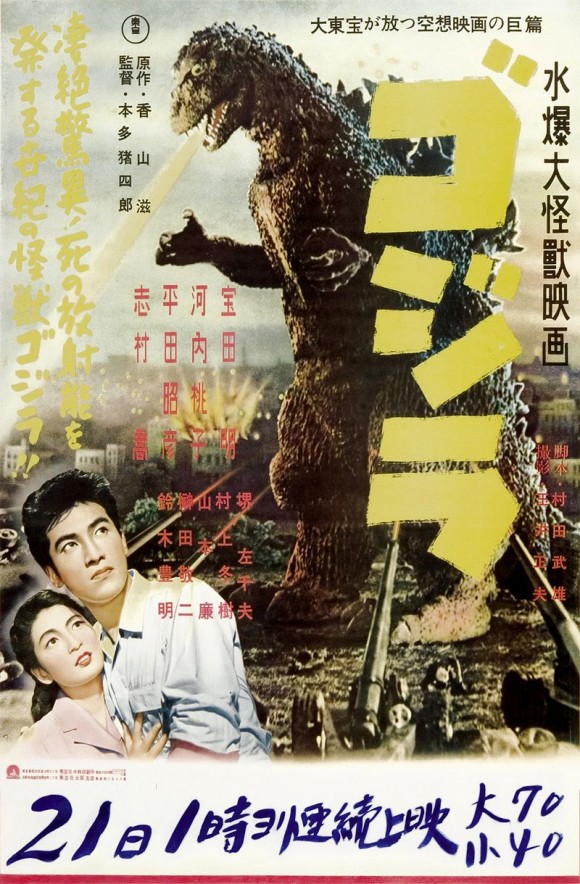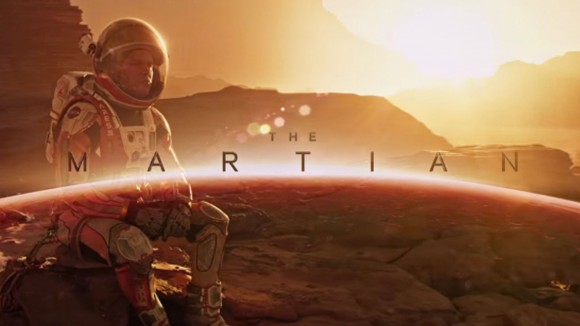aNewDomain — In “Bait,” Courtney Farrell brings a classic theme to fresh, new audiences. Like the “Don’t screw around with nature” theme. I explored that one once before, in this review of “Jurassic World.” Beginning really with the atomic age, movies like “Gozilla,” “Them,” and more or less any movie based on any H. G. Wells story have shown us the dangers of manipulating nature.
— In “Bait,” Courtney Farrell brings a classic theme to fresh, new audiences. Like the “Don’t screw around with nature” theme. I explored that one once before, in this review of “Jurassic World.” Beginning really with the atomic age, movies like “Gozilla,” “Them,” and more or less any movie based on any H. G. Wells story have shown us the dangers of manipulating nature.
In all these, science is portrayed as a sort of Pandora’s box — a vial which, once cracked, released endless torment and destruction on the world.
Take “Godzilla.” There you’ll find the most clearly traceable of these stories, a hundred-foot tall monster created by radiation. Not much of a stretch to link this to Japan’s fears related to its nuclear victimhood. More modern anxieties, though, lead to different stories.
 We have a glut of zombie-apocalypses, manufactured plagues and worse. Behind all these pandemic movies like “World War Z” lies a broader anxiety. Farrell’s novel gives us zombies that can move from human to other hosts.
We have a glut of zombie-apocalypses, manufactured plagues and worse. Behind all these pandemic movies like “World War Z” lies a broader anxiety. Farrell’s novel gives us zombies that can move from human to other hosts.
Zombies are a silly proposition, really; “The Walking Dead” tried to rationalize them with science but ultimately failed to produce a credible explanation. Brain-stem activity persisting after death, without the benefits of higher brain functions, leading to extreme hostility and hunger.
But said explanation fails to account for the body surviving decay and other morbidity processes or how a viral infection would turn on the brainstem or why the zombies shamble rather than running or how they can see without their occipital lobes functioning, or a hundred other problems.
Farrell’s explanation in “Bait,” though, has the potential to be much more sophisticated, while addressing our core anxiety, too. Farrell, you see, is a scientist.
I won’t spoil the whole thing for you, actually. But, this is a human-created disaster of global proportions.
Sound familiar?
There is a whole category for science fiction now dealing with post-apocalyptic themes. Almost none of that fiction deals directly with the underlying anxiety. A colleague recently criticized one of my stories for containing the line, “Capitalism had created climate change, the Endless Summer, and now it was all gone.”
He said including such a line was political and therefore stood to dismay half my potential audience, who might disagree. And never mind the fact that this is objectively verifiable. The human causes of climate change are not beyond dispute, but you’re going to have to do a lot better than some lobbyists disguised as scientists on Fox News now.
Things are heating up.
Anyway, Farrell’s apocalypse is human-created and requires human solutions. An even more recent spate of stories have to do with us abandoning Earth, escaping the problems we have made here. But Mars, the most common target for colonization, is even more hostile than Earth is likely ever to be.
Farrell addresses this, too: the ultimate futility of trying to leave the problem to someone else.

And all this while also taking a good, hard look at how women are treated in modern society by projecting this treatment to its logical conclusion, in a world where women are vastly outnumbered by men. Hardship draws out the best and worst in people: it makes us insular, more bigoted and prejudicial than usual.
The real world is fraught with racism, sexism, heterosexism, xenophobia. We are faced daily with these competing questions: Can we survive? And, do we deserve to?
Climate change rarely makes the news but our inhumanity to one another always does.
If there’s a fault in the story “Bait,” it is the usual fault in all such tales: that individual action, a single hero can have a large impact on such things. Zombies and giant monsters might be amenable to heroes. Climate change, though, is going to require more of us, all of us.
It’s going to require a change in the way we adapt to an information and mis-information rich environment.
Bottom line: Farrell’s novel “Bait” is a great read, and I heartily recommend it.
For aNewDomain, I’m Jason Dias.
Cover image: Amazon.com, All Rights Reserved.
Image one: “Gojira 1954 poster 3” by Toho Company Ltd. (??????, T?h? Kabushiki-kaisha) © 1954 – movie poster made by Toho Company Ltd. (??????, T?h? Kabushiki-kaisha).. Licensed under Public Domain via Wikimedia Commons; image two: reflectionandchoice.org, All Rights Reserved.













